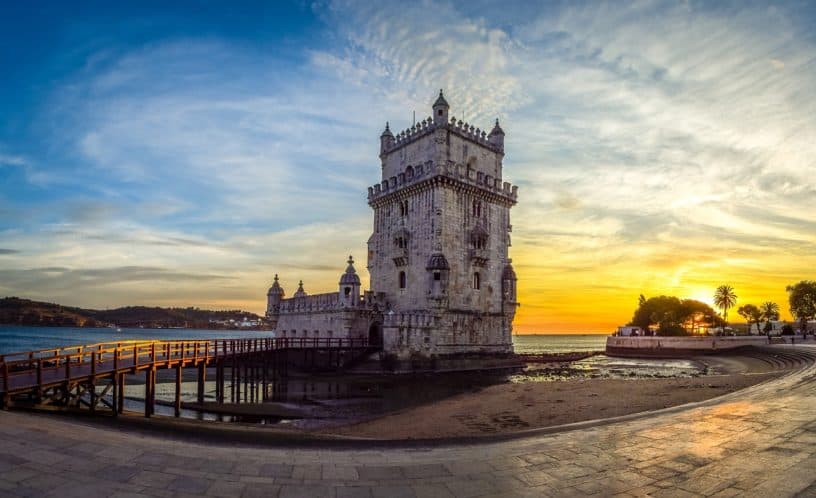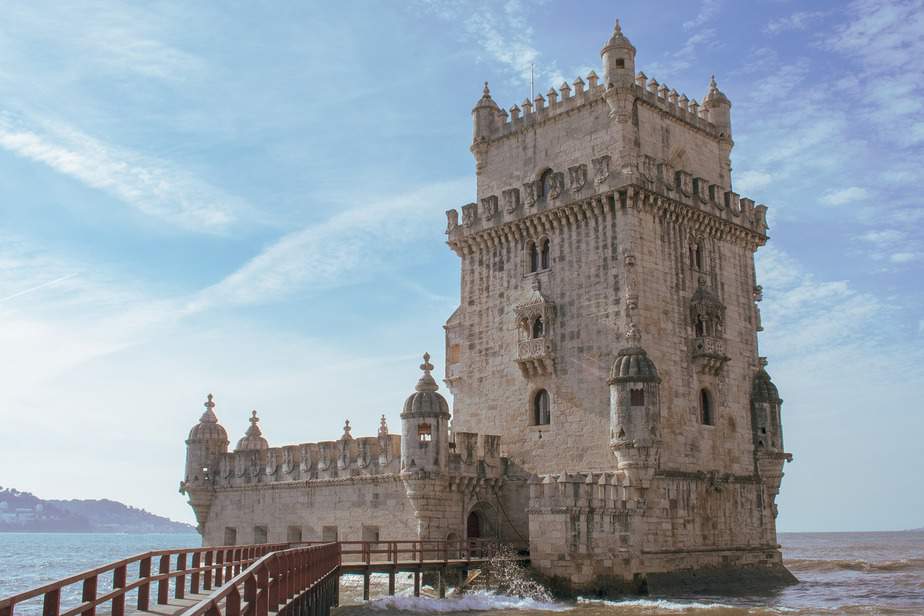Top 4 historical monuments in Lisbon you need to visit
Lisbon is an ancient city, so you can imagine that there are plenty of monuments for you to visit! In this article, I will introduce you to the top 4 historical monuments in Lisbon you need to visit. Despite the city’s rich history, Lisbon has few monuments that have more than two hundred years of existence, because of the 1755 earthquake that nearly destroyed all the constructions of the city.
You can still see some monuments that were built before this great earthquake happened, and you also can see some that were built after the earthquake. All the monuments I’m about to share with you are both beautiful and impressive, and are essential to the understanding of Portugal history! This is why they made up to this list.
In every city in the world you visit, you will find many places and monuments that represent the country’s and city’s history and culture. These places are our legacy and contributed to what we are now. In Lisbon, the monuments you will be visiting transmit to their visitors the country’s history and perfectly show how it evolved throughout the centuries. Read on this article and find out the top 4 historical monuments in Lisbon you need to visit!
Get to know Portugal history: Mosteiro dos Jerónimos
First on my list of the top 4 historical monuments in Lisbon you need to visit is the splendid and famous Mosteiro dos Jerónimos, of course!
This majestic monastery is located in the neighborhood of Belém. It is one of the most important Manueline architecture monuments examples! Considered to be World Heritage Site by the UNESCO in 1983, you should definitely not miss it while in Lisbon.
The Jeronymos Monastery was commissioned by the King Manuel I of Portugal to perpetuate the memory of Prince Henry, the Navigator. It was founded in 1496 as Mosteiro de Sta. Maria de Belém at the time. Some of the most important Portuguese figures were buried there, such as the King Manuel I of Portugal and his wife, the King João II of Portugal and his wife and a few poets like Luís Vaz de Camões and Fernando Pessoa.
The construction of this monastery was financed by the gold, spices and precious rocks that were brought from the travels and discoveries the Portuguese explorers and navegators made around the world, during the Age of Discoveries. At the beginning, it belonged to the “Ordem de São Jerónimo“, it was the monks house until 1833. Their main duties were to pray for the soul of the King and to give spiritual support to the navegators who sailed away to explore new worlds.
Pay attention to the architectural details of the building. Have a look at the south door of the Jeronymos Monastery. The statues can definitely tell you a lot about the Portuguese beliefs, culture and history. The biblical references, the statues of the King John II of Portugal and of Arcanjo São Miguel, protector of Portugal, are only a few of the statues you can appreciate. Taking the time to observe the beauty of the south door is like looking at a book, and enjoying the history it tells us.
Inside the Mosteiro dos Jerónimos, visit the church, the choir, the cloister which I think is one of the most beautiful in the world with all the small sculpted details, the Chapter hall where the monks used to meet. You cannot imagine how much there is to explore in the monastery. It is such a majestic place that will depict so much about Portugal history!
Seek new horizons: Torre de Belém
The Belém Tower is a fortified tower, also found in the neighborhood of Belém. Thanks to its key role for the discoveries Portuguese explorers made, it was considered to be World Heritage Site. The building was commissioned by the King João II of Portugal for the defence of the port and to be an entrance door for Lisbon.
Built in 1515, it was first a fortress to defend Lisbon port, to oversee the ships arrivals and possible attacks. The Torre de Belém was the starting point for many travels of the Age of Discoveries and for the sailors it was the last image they got of their homeland.
The tower reflects the Islamic and Far East influences that are characteristic of the Manueline architecture. Over the years, the tower lost its initial purpose but is is now one of the most famous monuments of Lisbon. Get to the viewpoint at the top to enjoy an amazing view over the Tejo river. By visiting this monument, you will understand how much the Portuguese feel connected to the sea and how important their thirst for discovery contributed to their greatest accomplishments.
You won’t find much to see inside the floors of the tower. So, my advice is for you to visit the Belém Tower during the off-peak hours to enjoy its incredible view from the top and to have a close look at the details of the monument that are essential to the understanding of Portugal history.
Learn about ancient civilizations in Lisbon: Castelo São Jorge
Next on my list of this top 4 historical monuments in Lisbon you need to visit is the Castelo São Jorge! It is one of the most emblematic monuments of the city of Lisbon, located in the highest hill of the city. Although some remains date back from the sixth century BC, the oldest fortress dates back from the second century BC. Archaeology discovered traces of Phoenicians, Greeks, Carthaginians, Romans and Muslims, which prove that the territory was occupied since ancient times.
The castle was built during the tenth and eleventh century, when Lisbon was still an important Muslim port city. In 1147, the first king of Portugal, Afonso I of Portugal, conquered the castle and the city from the Moors. Between the thirteenth and the sixteenth century, the São Jorge Castle served its most important purposes. In the sixteenth century, the King Manuel I of Portugal received the navegator Vasco da Gama after his return from India. Also, the first ever Portuguese play, directed by Gil Vicente, happened in the castle for the celebration of King John III of Portugal’s birth.
While walking the different parts of the castle, you will discover so many things about the history of Lisbon and about the different civilizations that once lived there. This historical monument is definitely a must in your visit of Lisbon! However, I advise you to avoid weekends to visit this emblematic landmark of Lisbon!
Find out about Portuguese most important figures: Panteão Nacional
The Panteão Nacional is located in the Igreja de Santa Engrácia and only exists since 1916. Many important figures of Portuguese history are buried there, such as the most famous Fado singer Amália Rodrigues, the writer Almeida Garrett and also a few Presidents! You will find some memorials dedicated to other Portuguese figures, such as Luís de Camões, Vasco da Gama, Pedro Álvares Cabral and many others, as well.
The purpose of this historical monument is to pay tribute to the Portuguese citizens that positively contributed to the wealth of Portugal: from the expansion of the Portuguese culture, its history and its values, the defence of the values of freedom and the protection of Arts and Literature.
At the beginning, it was a church, the Igreja de Santa Engrácia and was to be used for religious practice. By the end of the seventeenth century, it was damaged due to a storm so it had to be reconstructed. But the renovation works only finished in 1966, almost three hundred years later!
This is one of the top 4 historical monuments in Lisbon you need to visit, because it will allow you to learn more about the country’s history and to find out more about the most important Portuguese figures! Apart from the knowledge you will acquire from visiting it, you will also get to enjoy a splendid view over the city and the Tejo. Plus, it is one of the finest examples of Portugues Baroque architecture, with its majestic dome and colorful marbles!
Bonus: Praça do Comércio
As a bonus, I want to talk about the Praça do Comércio which is not a monument, but a square! It is, nonetheless, an historical landmark you need to visit while in Lisbon, because it tells a lot about the history of the city.
Located in the centre of Lisbon, you will end up in this square, one way or another. The Praça do Comércio, also known as Terreiro do Paço is one of the greatest squares of Europe. This charming place is located by the Tejo river, and it is the entrance door to the Rua Augusta and the Baixa neighborhood.
Nowadays, it is essentially occupied by ministries and government departments, but it once was the gateway to the city. Court events used to organized there, prominent people used to arrive to the city by this square, ships loaded with precious china, spices from other territories, Pau Brazil and sugar arrived from this door. The Praça do Comécio was the image of the cosmopolitan capital. The most important events happened in this square, until the 1755 earthquake happened and destroyed the city.
But the city was reborn from its ashes and it was the beginning of a new phase! The Marquis of Pombal had a project for the city that would show the new face of the city. The streets of the neighborhood were to be straight and parallel, and at the center of the square, the statue of the King John I of Portugal was to be built. With the reconstruction of the city, many other important events and revolts took place. For instance, the Praça do Comécio played a major role in the Carnation Revolution. The history of the square is very interesting, which is why I consider it to be a must in your visit of the city! While you’re in the area, don’t forget to go up the Rua Augusta Arch that is such a unique place and also offers a great view over the Baixa!
While walking in Lisbon, you will find marks of its history all around the city. Take the time to appreciate all its landmarks and details that will reveal so much about the history and culture of Portugal. This top 4 historical monuments in Lisbon you need to visit is over, now that you’ve been introduced to these, all there’s left for you to do is to go for adventure and explore the city! I hope you’ve enjoyed reading this article and that it has inspired you! Don’t hesitate to get in touch with us, if you need further information about anything! See you soon in Lisbon!
Planning a trip to Paris ? Get ready !
These are Amazon’s best-selling travel products that you may need for coming to Paris.
Bookstore
- The best travel book : Rick Steves – Paris 2023 – Learn more here
- Fodor’s Paris 2024 – Learn more here
Travel Gear
- Venture Pal Lightweight Backpack – Learn more here
- Samsonite Winfield 2 28″ Luggage – Learn more here
- Swig Savvy’s Stainless Steel Insulated Water Bottle – Learn more here
Check Amazon’s best-seller list for the most popular travel accessories. We sometimes read this list just to find out what new travel products people are buying.















